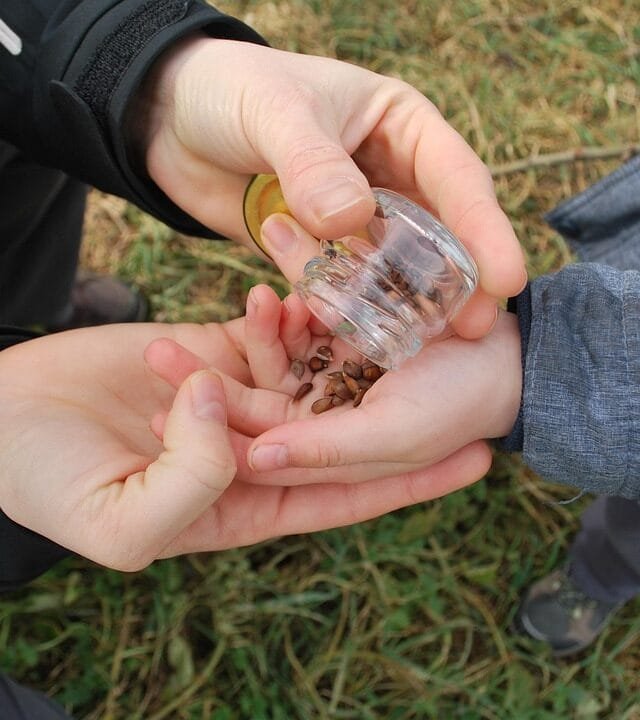The Permaculture Revolution: How to Join the Movement and Create a Better World

Revolutionizing Sustainable Living: An Introduction to Permaculture
As the world grapples with the challenges of climate change, urbanization, and environmental degradation, it’s becoming increasingly clear that a new approach to living is needed. Enter permaculture, a design system that incorporates the principles of ecology and natural systems to create sustainable ecosystems. In this article, we’ll explore the concept of permaculture, its principles, and how it’s being applied in various settings to create a more resilient and self-sufficient future.
What is Permaculture?
Permaculture is a holistic approach to design and management of landscapes, gardens, and communities that aims to create a sustainable and regenerative system. Developed in the 1970s by Australian biologists Bill Mollison and David Holmgren, permaculture is based on the observation that nature operates in harmony, with each element playing a vital role in the ecosystem. By mimicking these natural systems, permaculture designers create diverse, robust, and resilient ecosystems that produce food, shelter, and energy while promoting biodiversity and social equity.
Principles of Permaculture
Permaculture is guided by three core principles: earth care, people care, and fair share. These principles are rooted in the understanding that humans are an integral part of the natural world and must work in harmony with the environment to ensure long-term sustainability.
- Earth Care: This principle emphasizes the importance of preserving and respecting the natural world. By working with, rather than against, nature, permaculture designs promote biodiversity, conserve resources, and reduce waste.
- People Care: This principle recognizes that people are an essential part of the ecosystem. Permaculture aims to create communities that are inclusive, just, and equitable, where everyone has access to resources and opportunities.
- Fair Share: This principle encourages sharing of surplus resources, knowledge, and skills within the community. Permaculture is about collaboration, cooperation, and mutual support.
Applications of Permaculture
Permaculture is not limited to gardening or farming; it can be applied to a wide range of settings, from urban landscapes to rural communities. Some examples include:
- Gardening: Permaculture gardening involves designing systems that mimic natural ecosystems, using techniques like companion planting, mulching, and rainwater harvesting to create diverse and resilient ecosystems.
- Farming: Permaculture farming focuses on regenerative agriculture, where crops are grown in harmony with soil health, biodiversity, and ecosystem services.
- Urban Permaculture: Permaculture design can be applied to urban areas, creating green spaces, green roofs, and community gardens that improve air quality, reduce urban heat islands, and increase food security.
Successful Permaculture Projects
From backyard gardens to large-scale farms, permaculture is being used to create sustainable and regenerative systems around the world. Some notable examples include:
- The Transition Towns movement: A global network of communities working together to create resilient and sustainable societies
- The Bristol Permaculture Network: A UK-based project that aims to create a resilient and regenerative local food system
- The Regeneration Project: A US-based initiative that uses permaculture principles to restore degraded land and promote ecological restoration
Getting Started with Permaculture
If you’re interested in incorporating permaculture principles into your daily life, here are some actionable steps for beginners:
- Assess your site: Identify the local climate, soil, and microclimate to design a permaculture system that suits your environment.
- Growing a small garden: Start with a small garden, using permaculture principles to design a diverse and resilient ecosystem.
- Connect with local permaculture communities: Find online forums, local groups, and workshops to learn from experienced permaculture practitioners.
- Take a permaculture course: Enroll in a permaculture design course to gain a deeper understanding of the principles and techniques.
Frequently Asked Questions
Q: Is permaculture only for farmers?
A: No, permaculture is applicable to anyone interested in sustainable living, gardening, and regenerative design.
Q: Is permaculture a new concept?
A: Permaculture has been around since the 1970s, but it’s gaining popularity as a solution to global sustainability challenges.
Q: Is permaculture only for rural areas?
A: No, permaculture can be applied to urban and rural settings, providing opportunities for community engagement and food production.
In conclusion, permaculture offers a comprehensive approach to sustainable living, incorporating earth care, people care, and fair share principles. By adopting these principles, individuals and communities can create resilient and regenerative ecosystems that promote biodiversity, social equity, and long-term sustainability. Whether you’re a gardener, farmer, or community leader, permaculture has something to offer. So, let’s work together to create a more sustainable future, one permaculture design at a time.
Conclusion:
Permaculture is a powerful tool for creating sustainable and regenerative systems. By adopting the principles of earth care, people care, and fair share, we can work together to build a better future. If you’re ready to start your permaculture journey, we invite you to join our community of like-minded individuals and start designing your own permaculture system today!









